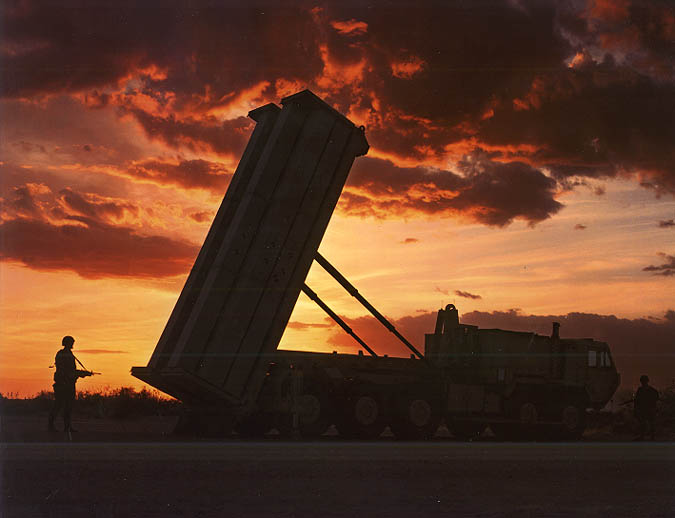Earlier this month South Korea agreed to the placement of a defensive anti-missile system called the Terminal High Altitude Area Defense (THAAD) system, which is aimed quite clearly against North Korea but it cannot be denied, also against China. The agreement showed that at last the United States had convinced Seoul – which only accepted the idea very recently – to along with the deal after increasingly frequent missile and nuclear tests by North Korea. That agreement is far more significant than it appears.
This is why China has spoken out against the deployment, saying it will destabilize an already fraught region and negatively affect the region’s stability .
The Christian Scientist has Jonathan Pollack saying, “I certainly don’t believe THAAD or any missile defense is a panacea.” Pollack, Interim SK-Korea Foundation Chair in Korea Studies, Center for East Asia Policy Studies, is at the right-wing Brookings Institution in Washington, D.C. “But if it inhibits North Korea, under some extreme circumstances, from using its capabilities, and instills some confidence in the government of South Korea to defend key assets and population areas in a more integrated fashion, then it’ll be money well spent,” pollack continues.
How much of a threat does North Korea actually pose to South Korea? This question is posed by the newspaper, but the rhetoric – and continued missile and nuclear tests – seems intended to instill fear.
Is it a chicken and egg situation, after all the latest round of ballistic missile tests by North Korea July 19 is seen as a reaction to South Korea’s decision to deploy THAAD.
THAAD has not been viewed with favour in South Korea as many feared it might provoke a retaliation from North Korea and anger China. Yet it is not the two Koreas alone, and the United States, that have a stake in this issue. China is especially concerned. Japan simply affirms the USA ploy.
Opponents say the military benefits of THAAD are not significant and point out that areas like Seoul, which are close to the North Korean border, remain vulnerable to low altitude missiles and artillery attacks. While THAAD might not substantially alter the balance of military power on the Korean peninsula, peace activists said it will undermine broad international support to pressure the North to return to nuclear disarmament negotiations.
Beijing and Moscow both denounced THAAD as an attempt to increase U.S. military power in the region and for the likely use of the system’s powerful radar to monitor their military installations. A Xinhua article on the deployment of THAAD insists it is a move that would “negatively affect peace on the Korean peninsula,” as well as security on a regional and global scale, and would break “strategic balance and boost an arms race.”
The missile system could impact China’s nuclear capability which is based on minimal numbers of warheads, in the belief that such would still be a sufficient deterrent. But if those capabilities were compromised by THAAD, Beijing would boost its arsenal.
However, it’s a done deal and South Korea has to go along with this decision and this is why a good section of the population are on the streets demonstrating against THAAD.
Protesters, many residents of the farming region of Seongju, fear the system’s powerful radar will be harmful to their health as well as the environment and by default the economy despite assurances by U.S. and South Korean officials that it is safe. Many also accuse the government of lacking transparency in its decision making.
About 2,000 people rallied outside the main train station in the capital, Seoul, wearing yellow capes and waving banners that said “No THAAD,” as they called on the government to reverse its decision.
The main contention surely is that the deployment is simply more missiles, more weapons, expanded armament industry development, an increasing number of possibilities of warfare and decisions made by smaller and smaller numbers of people and exclusion of the common man is affairs that directly affect daily life.






